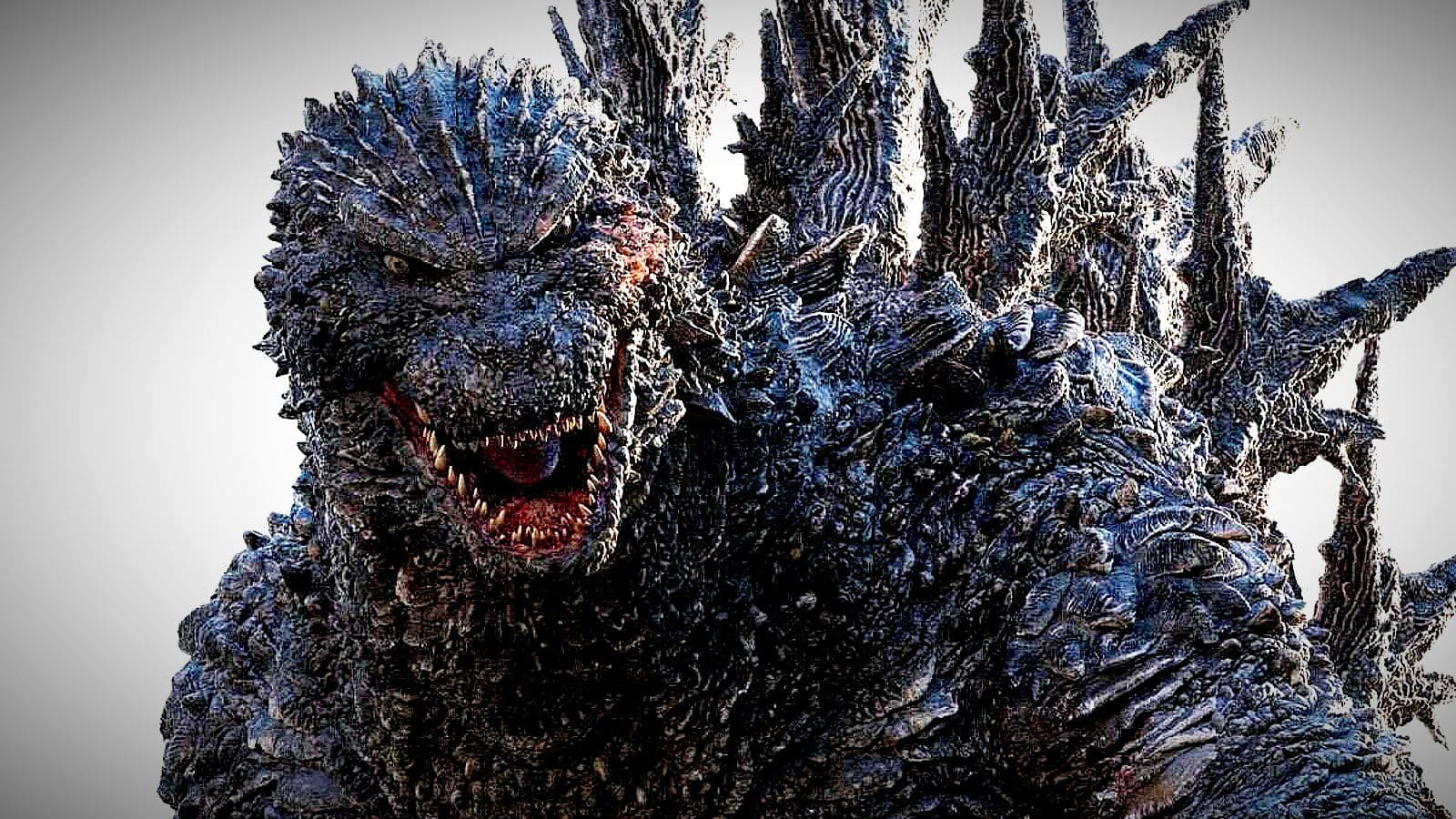
Since it started 70 years ago, the Godzilla franchise has always put its behemoths at the front and centre in its movies. Takashi Yamazaki’s new film is a brilliant reversal: by the time the credits roll, you care more about the human cast than a monster who ravages cities and seas like a god.
The best thing is how Yamazaki goes back to the source. Set between the final days of Imperial Japan and post-WWII, a young kamikaze pilot Kōichi Shikishima (Ryunosuke Kamiki) hides out on the militarised island of Odo. When the small but terrifying baby Godzilla emerges for the first time from its waters, Kōichi is too nervous to even shoot. After the bodies pile up and the traumatised pilot returns back to his wartorn home of Tokyo, Kōichi is chastised as a coward. Not for failing to kill a dinosaur (he rather mysteriously keeps that detail to himself for several years) but for lacking the gumption to fly his kamikaze plane into certain death.
What follows is a quiet beat that feels like something like a Kurosawa film. Our hero isn’t a man of action, but nervous to the point of uselessness: a hero cut from the same cloth that Hideaki Anno (who helmed the less stellar Shin Godzilla) might opt for in anime. The setting is engrossing. Frayed rice tatami doors, adopted family members and a growing circle of Kōichi’s friends give a sense of a shell-shocked country slowly moving out of crisis. Japan rebuilds itself slowly, and while the ensemble cast grows, the bonds built during that miserable period suck you in totally.
It’s not a spoiler to say Godzilla destroys a city in every movie. But the early vulnerability makes for a juxtaposition that’s unerringly effective. Yamazaki, who cut his teeth not just as a director but a VFX artist, performs small miracles with his $15 million budget. Grown up, Godzilla is a bug-eyed, big-hipped, blue-tinged figure of death. He eats battleships like fish, swats planes like flies. With a mix of low-angle shots with over the shoulder carnage, the prequel indulges in a first-encounter horror: turning the kaiju into a enigmatic force of nature that isn’t—like in Japan’s or America’s more watered down sequels—a noble protector. Godzilla is war. Nuclear radiation. And an incomprehensible evil.
When the film seeks revenge, the score (with the brilliant 1950s soundtrack featuring) isn’t just personal. For the Japanese who survived the post-War period, Yamazaki links the past to the present politically. The Japanese government “hasn’t changed” according to one character, it ignores all threats, “views life cheaply” and plans invasions with a suicidal ideation that makes its citizens cannon fodder. Carnage is a bigger force than just Godzilla, and once the citizens launch their own initiative, the film flirts with a pacifist message.
Luckily for audiences, revenge for Tokyo is served up as a watery spectacle; one that pits Godzilla against the remains of Japan’s navy in a perfect scramble. Of course it’s a great action movie finale. But like a kamikaze pilot who doesn’t want to die, Minus One is big on odd details. By the close, it breaks with convention and delivers a final line that shows how trauma lingers over one character’s mind. As you leave the theatre, it’s those heady details that elevate the film from a blockbuster into something more arthouse—and it’s why Minus One never loses its entertainment value. It’s the personal cost, no matter how small, that gives devastation impact. Going back to the source but evolving the franchise, Minus One treats human life with such respect that every character feels worth defending. In a series that promises citywide destruction, Godzilla has never created such terror.





